Mt. Edith Cavell
July 28, 2009
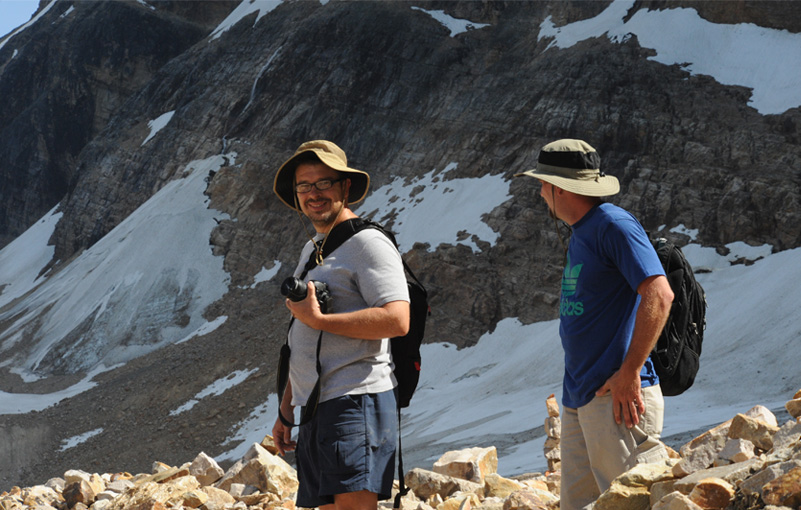
After canoeing in the morning at Pyramid Lake, we polled the group for their preference for the last afternoon's activity. The consensus was to return to Mt. Edit Cavell so the girls could play on the rocks there. The girls had enjoyed the previous visit on Sunday, so we all happily headed up the scenic Edith Cavell Road again.
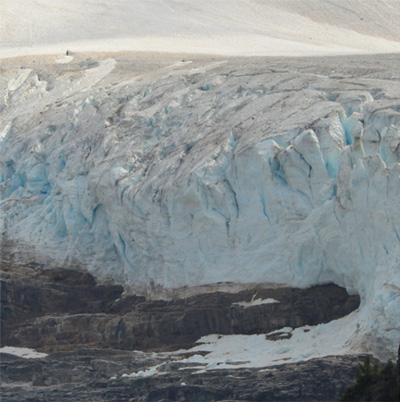 | 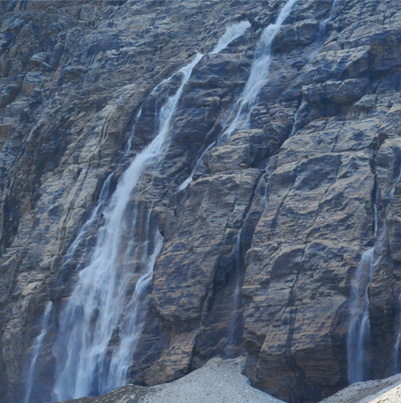 |
As we approach the base of Angel Glacier we are greeted by the now-familiar sights of the glacier high above us and the icemelt waterfall coming down to the base moraine.
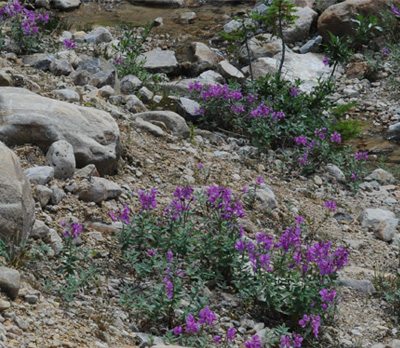 |  |
We approached the base of the glacier by the low trail as we had on our previous glacier visit. It is an easy and attractive trail with fireweed along the little stream on the way. Knowing we were going to the rocky moraine, Brenda came prepared with a cup of coffee and a book in case she didn't want to keep up with us across those rough rocks.
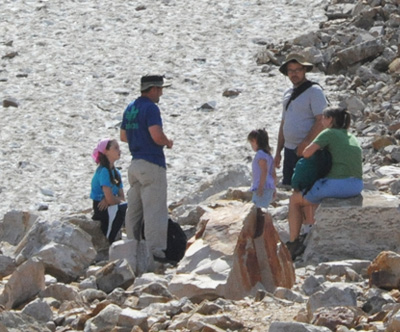 | 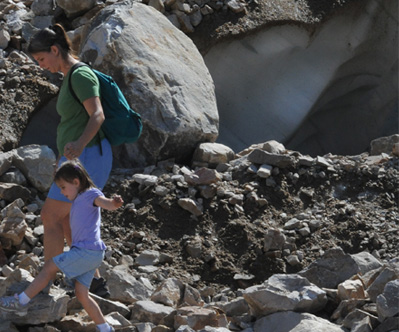 |
We made the trek across the rough rock to the patch of dirty snow that the girls wanted to play on. Darla leads Elyse by the remarkable ice cave which goes out of sight into this icy pile of glacial debris.
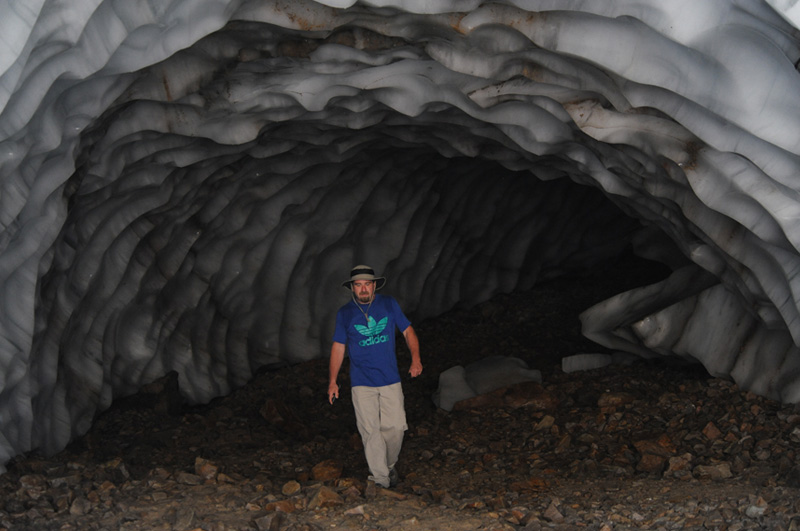
Mark goes some distance back into this remarkable ice cave, but there is no end to it in sight - a mysterious black tunnel into this unstable ice field. Probably the feed meltwater stream for an earlier glacial pool?
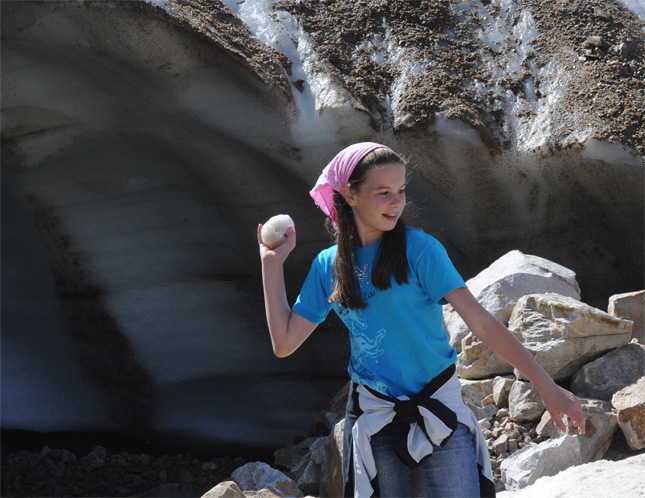 | Ashleigh makes a snowball, and is probably looking for her sister as a target. |
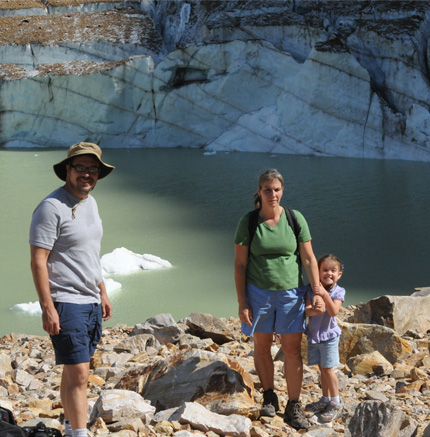  | 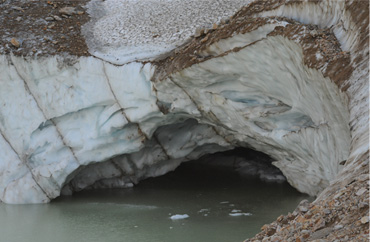 Jeff, Darla and Elyse stand on the rock bluff overlooking the glacial pool. To the right of where they are is the underwater ice cave, which looks to be shaped similarly to the one that Mark went into. 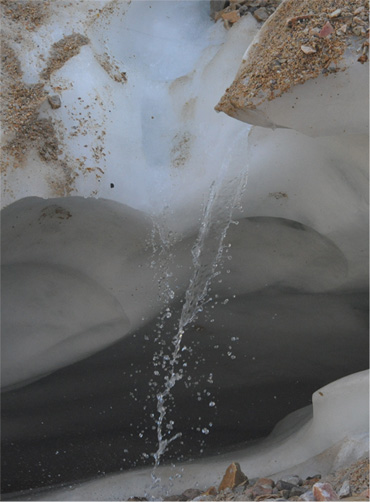 |
There are lots of crevices and low caves going back into the ice under the gravel cover on the slope, and there are interesting variations of meltwater streams. The girls are keen on exploring this rough, rocky area.
 |  Mark climbs up the gravel slope to get close to the waterfall. Above his head the waterfall comes right out of the foot of the glacier. |
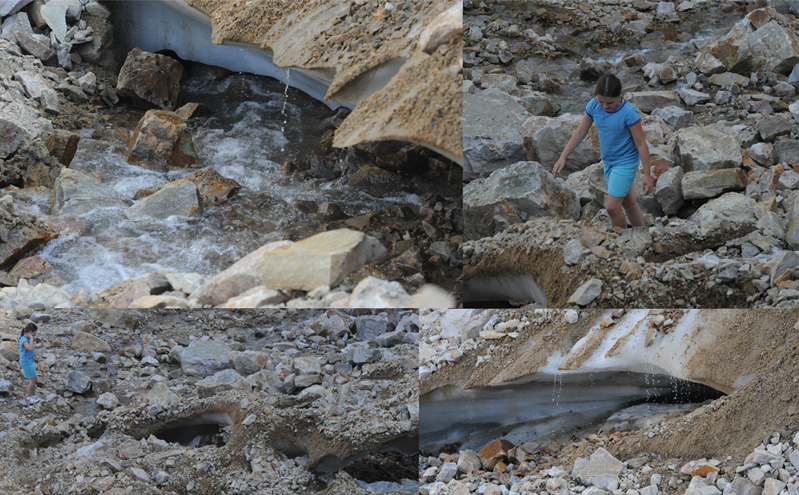
Jordan explores the little cracks and crevices where you can see ice under the gravel and rock layer. There are some places where little streams run out of the crevices.

Mark is now just about up to the level of the glacier-melt waterfall. I would expect he would feel its spray. Note that the rocky ground below him is filled with ice.
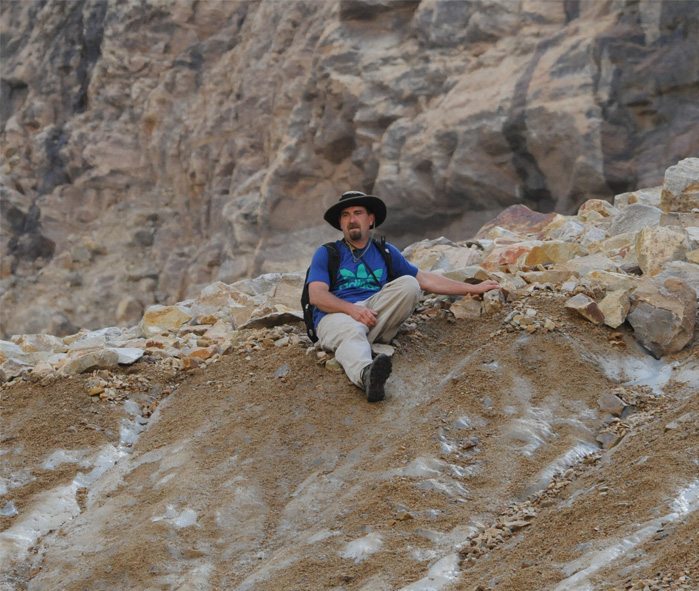 | Mark sits on the high ledge, presumably contemplating how he is going to get back down. Note that the rocky cover above him is like it is down at the base - a jumble of large rocks. But underneath it all is the ice that is exposed below his feet. |
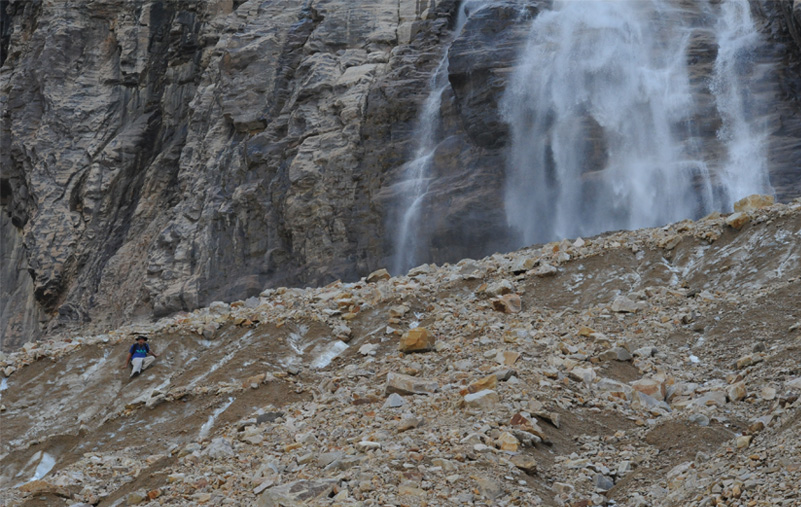
Mark starts his descent down the steep icy slope.
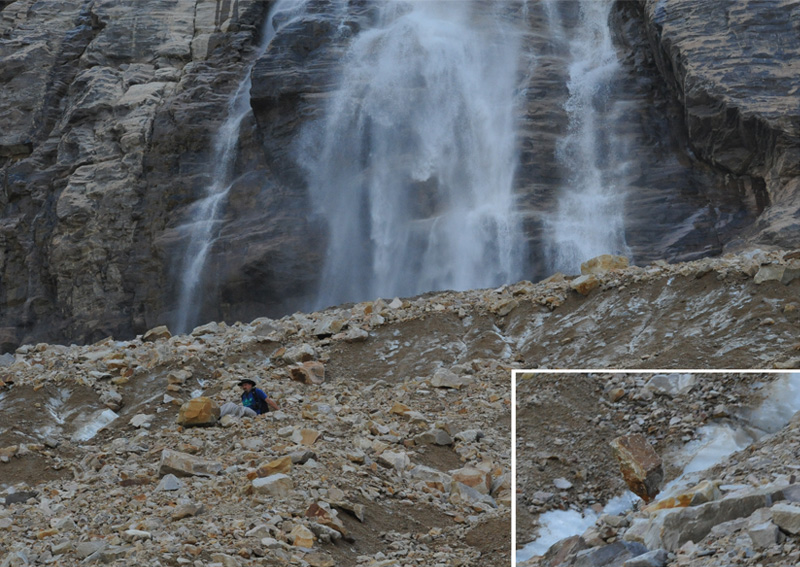
He decides to stop and push a big boulder, presumably trying to get it to roll all the way down to the glacial pool and make a big splash. He does get it tumbling down the slope as you can see in the inset, but it stops after a few tumbles.

 | Mark has another go at trying to get a big rock to tumble down one of the icy troughs, but it doesn't cooperate, so he heads on down the icy slope. |
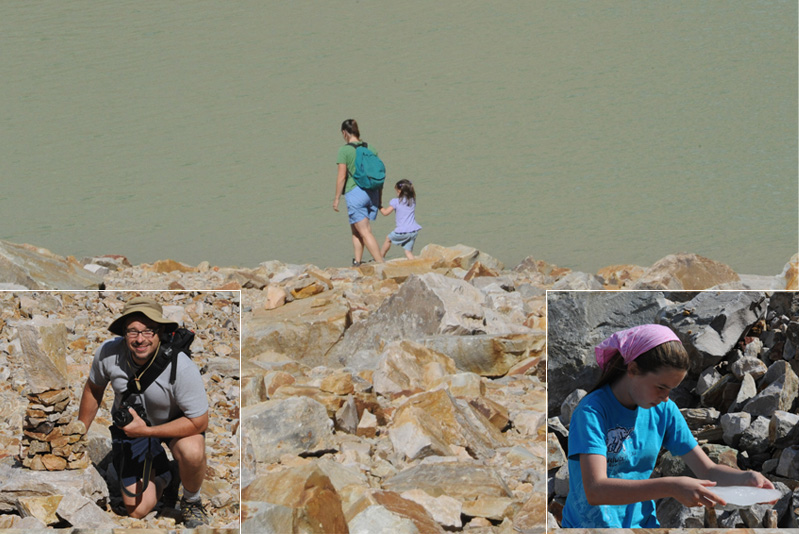
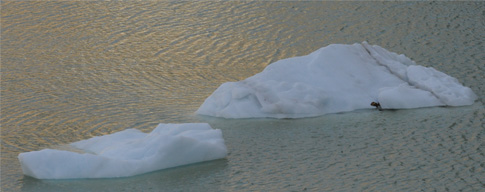 | You certainly wouldn't call this place beautiful - it was austere with the raw jumbled rocks. But there was a certain tranquility in seeing Darla walk Elyse along the edge of the rock ridge overlooking the glacial pool. It was neat to see the icebergs floating across from the ice wall. Jeff has really gotten into this stone column building - that's an impressive dry stone structure. Ashleigh has decided to top her column with ice, so she carried a piece of ice all the way from the iceberg pool to place on her structure. |

Though the dirty snowbank lacked in beauty, Jordan found it a fun and exciting place to be. Seeing snow is rare enough for the girls that they make the best of it.
 | 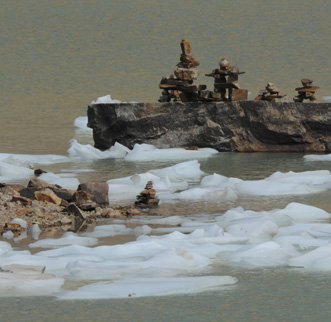 |
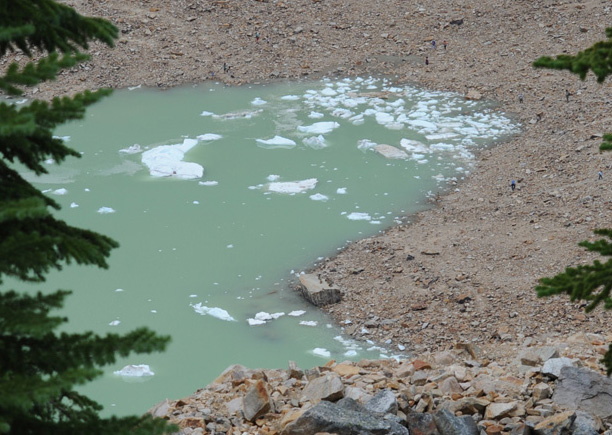 | We were surprised to find that in the three days since the girls had worked so hard to build their stone columns on this big rock, the water had risen to the point that it was now about twent feet offshore! Our view of this rock from up on the Edith Cavell trail at left shows the perspective when we were here on Sunday. As you can see in the current view below, their artwork is now protected by some very cold water and a flock of small icebergs. It has, however, been modified and added to by some visitors in the past three days. |
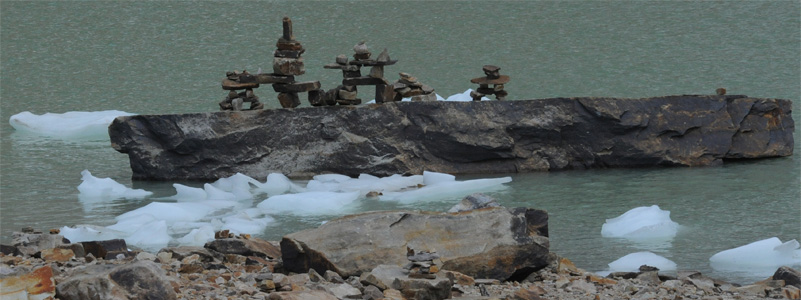
 | 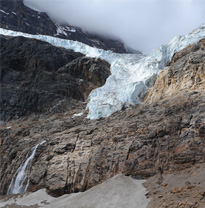 While we were playing around below, there was always this strange world of the glacier above us, with the intriguing melt stream that came from its base. From the fact the glacier pool was so much higher, we could judge that the days of warm weather were causing the glacier to melt faster. |
We heard a boom above and looked up to see that a piece of the bottom of the glacier had broken off and crashed against the rock below it! | 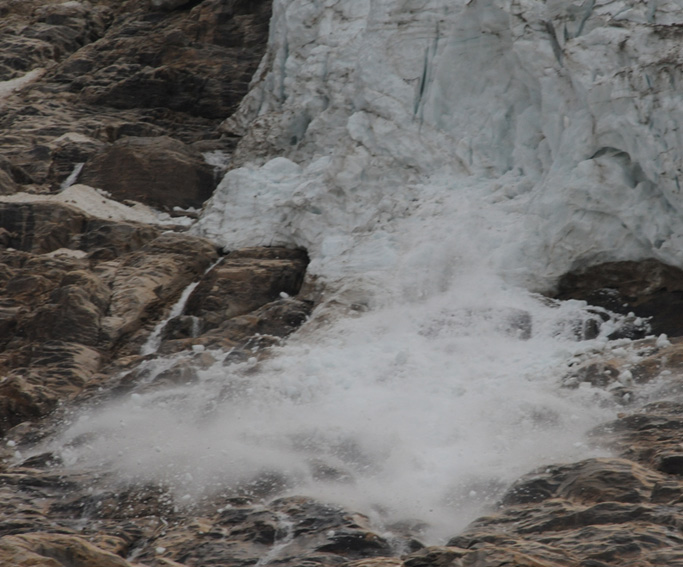
|
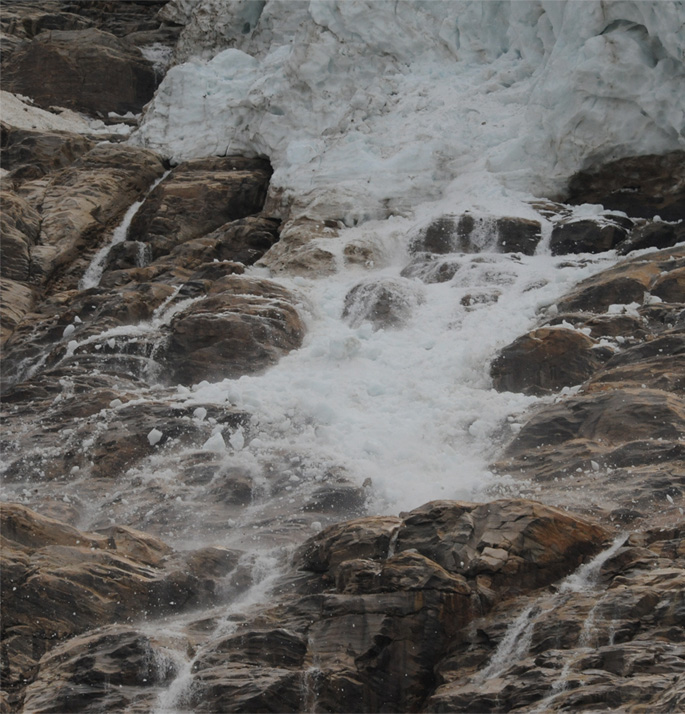
| The piece of glacial ice disintegrated upon impact and formed a flow of white powder with some larger pieces of ice that we could see. The powder flowed down the steep rock as an ice cascade, looking almost like water flowing. |
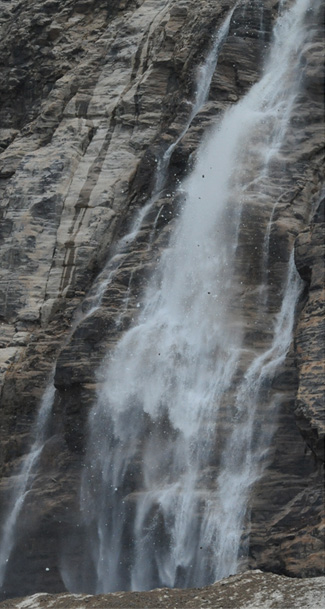 | 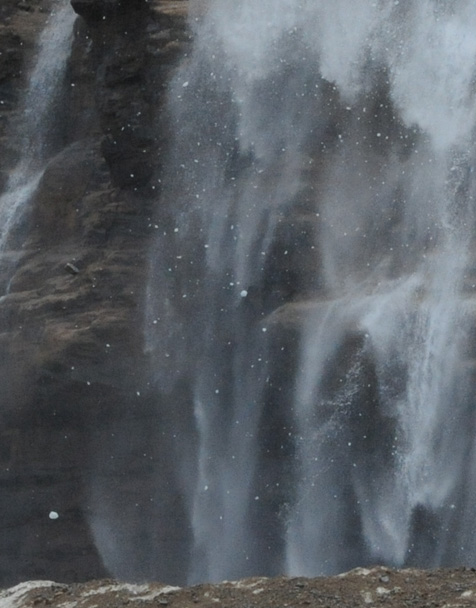
|
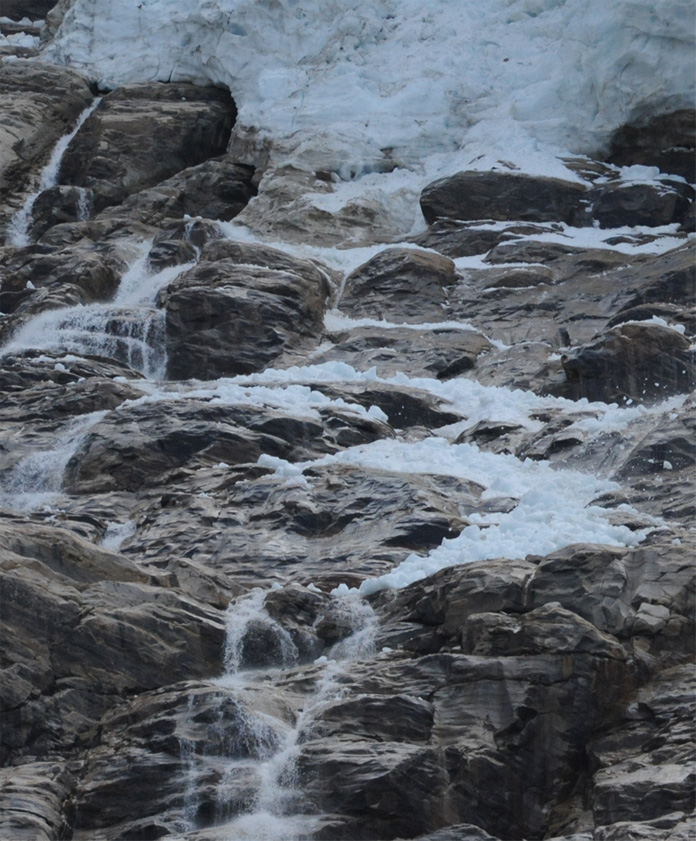 | As shown in the two views above, we watched the cascading ice fall all the way to the bottom waterfall where we could still see snowball-sized fragments of the ice falling. When all that excitement subsided, we could have a close look at the base of the glacier to see where ice fragments had settled and the melt streams were reforming. A strange world indeed - not the kind of sight we usually see. Note the freshly broken surface of the foot of the Angel Glacier at the the top of the picture. |

We were still talking about this dramatic icefall when about 8 minutes later we again heard a boom and looked up to see the impact of another fragment off the end of the glacier. This piece was larger, and in the left frame above you can see that the whole toe of the glacier looks like freshly broken ice. In the second frame, the ice and snow is flowing down the steep rock, and in the third frame it has stretched out to the point where part of it is launching over the cliff of the vertical wall that was directly above us. In the fourth frame, you can see that it has formed an ice fall parallel to the icemelt waterfall on the left that we had been watching.

The cascade of ice and snow formed an icefall parallel to the icemelt waterfall that is usually there. The above two views were less than a minute apart, so everything happens fairly rapidly. The whole show, from boom to stationary ice was actually about a minute.
This was a fitting climax to our second trip to Mt. Edith Cavell, so we headed down the trail to the parking lot and drove back to Jasper. We were all hungry, so we got sandwiches in Jasper and drove to Lac Beauvert, the lake that Mark had introduced us to.
| Lac Beauvert |
2009